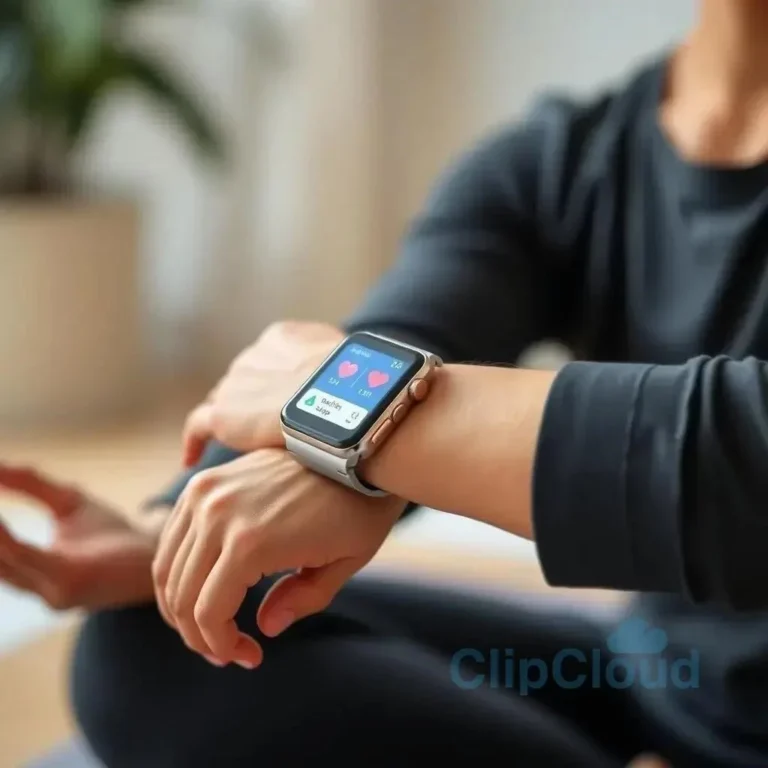The Benefits of a Digital Detox and How to Plan One
Understanding the Need for a Digital Detox
In today’s hyper-connected world, constant digital engagement can lead to mental fatigue, stress, and a diminished sense of presence. We’re constantly bombarded with notifications, emails, and social media updates, leaving little room for genuine connection and quiet reflection. A digital detox offers a conscious break from this digital overload, allowing your mind to rest and recharge. It’s a chance to reclaim your focus, enhance your well-being, and rediscover the joys of being present in the moment.
Planning Your Digital Detox
A successful digital detox requires careful planning to maximize its benefits and minimize potential disruptions. Consider these key steps to create a detox plan that works for you:
Set Realistic Goals:
Begin with manageable goals. Don’t try to completely disconnect overnight if you heavily rely on technology. Start with a short period, like a few hours each day, or a single day per week. Gradually increase the duration as you become more comfortable. Consider focusing on specific apps or platforms, like social media, rather than a complete blackout.
Establish Clear Boundaries:
Inform family, friends, and colleagues about your detox period. Let them know you’ll be less accessible digitally and provide alternative contact methods if necessary. This prevents misunderstandings and allows you to fully disconnect without worrying about missed communications. Setting clear boundaries also helps you resist the temptation to check your devices.
Schedule Your Detox:
Choose a timeframe that aligns with your schedule and minimizes potential disruptions. Weekends or holidays can be ideal, but even a few hours each evening can be beneficial. Mark your detox time on your calendar as a commitment to yourself. Treat it with the same importance as any other important appointment.
Prepare Your Environment:
Create a space that supports your detox goals. Remove digital distractions from your immediate surroundings. Charge your devices in a separate room, or turn off notifications. Consider stocking up on books, board games, or other activities that don’t involve screens. Preparing your environment helps minimize temptations and encourages engagement with offline activities.
Identify Potential Challenges:
Anticipate potential challenges and develop strategies to overcome them. If boredom is a concern, brainstorm a list of offline activities you enjoy. If you rely on your phone for work, explore alternative communication methods during your detox period. By anticipating challenges, you can proactively address them and increase your chances of a successful detox.
Consider a Gradual Approach:
If a complete digital detox feels overwhelming, start with small steps. Disable notifications for certain apps, establish specific times for checking email, or dedicate screen-free time blocks throughout the day. Gradually reducing your reliance on technology can make the transition to a full detox smoother and more sustainable.
Activities to Embrace During Your Digital Detox
A digital detox provides the perfect opportunity to reconnect with yourself, your loved ones, and the world around you. Embrace these activities to maximize the benefits of your unplugged time:
Spend Time in Nature:
Immerse yourself in the tranquility of nature. Take a walk in the park, hike a scenic trail, or simply relax in your backyard. Connecting with nature has been shown to reduce stress, improve mood, and boost creativity. Notice the sights, sounds, and smells around you, and appreciate the beauty of the natural world.
Cultivate Mindfulness:
Engage in mindfulness practices like meditation or deep breathing exercises. These practices can help quiet the mind, reduce anxiety, and enhance self-awareness. Focus on the present moment, observing your thoughts and feelings without judgment. Even a few minutes of mindfulness each day can make a significant difference.
Pursue Creative Pursuits:
Unleash your creativity through activities like painting, drawing, writing, playing music, or crafting. Engaging in creative pursuits can be a therapeutic outlet for self-expression and can boost your sense of accomplishment. Explore different forms of creativity and discover new passions.
Connect with Loved Ones:
Dedicate quality time to connecting with loved ones face-to-face. Engage in meaningful conversations, share experiences, and strengthen your bonds. Put away your phones and be fully present in the moment. Enjoy the richness of human connection without digital distractions.
Read a Book:
Lose yourself in the pages of a captivating book. Reading can transport you to different worlds, expand your knowledge, and stimulate your imagination. Choose a genre you enjoy and savor the experience of uninterrupted reading.
Engage in Physical Activity:
Move your body and boost your endorphins through exercise. Go for a run, bike ride, swim, or participate in a yoga class. Physical activity can reduce stress, improve sleep, and enhance your overall well-being. Find an activity you enjoy and make it a regular part of your routine.
Explore Your Local Community:
Discover hidden gems in your local community. Visit a museum, art gallery, or local market. Attend a community event or volunteer for a cause you care about. Engaging with your community can foster a sense of belonging and connection.
Maintaining the Benefits After the Detox
After completing your digital detox, the key is to integrate healthy digital habits into your daily life to maintain the positive changes you’ve experienced. Consider these strategies for long-term well-being:
Mindful Device Usage:
Be intentional about when and how you use your devices. Set specific times for checking emails and social media, and avoid mindless scrolling. Treat your digital interactions with purpose, rather than letting them dictate your day. Prioritize real-world experiences over digital distractions.
Establish Tech-Free Zones:
Designate specific areas in your home, like the bedroom or dining room, as tech-free zones. This creates spaces where you can fully disconnect and engage in offline activities. Encourage family members to participate in creating these tech-free spaces to promote connection and relaxation.
Curate Your Digital Feeds:
Unfollow accounts or unsubscribe from notifications that contribute to stress or negativity. Fill your digital feeds with content that inspires, educates, or brings you joy. Taking control of your digital environment can significantly impact your mental well-being.
Prioritize Sleep Hygiene:
Avoid screen time for at least an hour before bed. The blue light emitted from devices can interfere with sleep patterns. Instead, engage in relaxing activities like reading, taking a bath, or practicing mindfulness. Prioritizing sleep allows your mind and body to fully recharge.
Schedule Regular Digital Breaks:
Incorporate short digital breaks throughout your day. Step away from your devices for a few minutes every hour to stretch, walk around, or simply look out the window. These short breaks can help prevent digital fatigue and maintain focus.
Cultivate Offline Hobbies:
Continue engaging in the offline activities you enjoyed during your detox. Make time for hobbies, connect with loved ones, and spend time in nature. Nurturing these offline activities will help you maintain a healthy balance between the digital and physical worlds.
Reflect and Adjust:
Regularly reflect on your digital habits and make adjustments as needed. Notice how different levels of digital engagement affect your mood, productivity, and overall well-being. Be flexible and adapt your strategies to maintain a healthy and sustainable relationship with technology.



